‘Little Shop of Horrors’: An entertaining retro satire that needs more bite
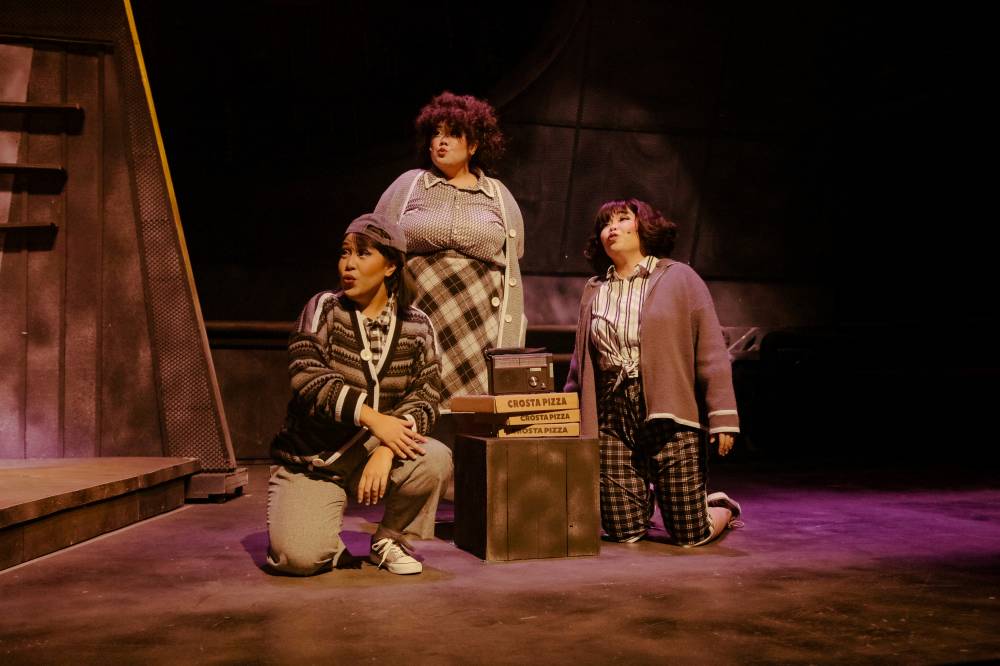
Truly morbid horror isn’t represented in musical theater that often, so it’s always a pleasant surprise to be reminded that the show about a giant talking Venus flytrap named Audrey II is also one of theater’s most popular—and darkest—horror-comedies.
Set in 1960s America, around the rundown city streets of Skid Row, “Little Shop of Horrors” follows the chaos and bloodshed that ensue when a poor flower store worker begins to lose control over an alien plant that seems to bring him good fortune.
The musical already comes equipped with spectacle and a cheeky score, which The Sandbox Collective’s new production gleefully puts front and center.
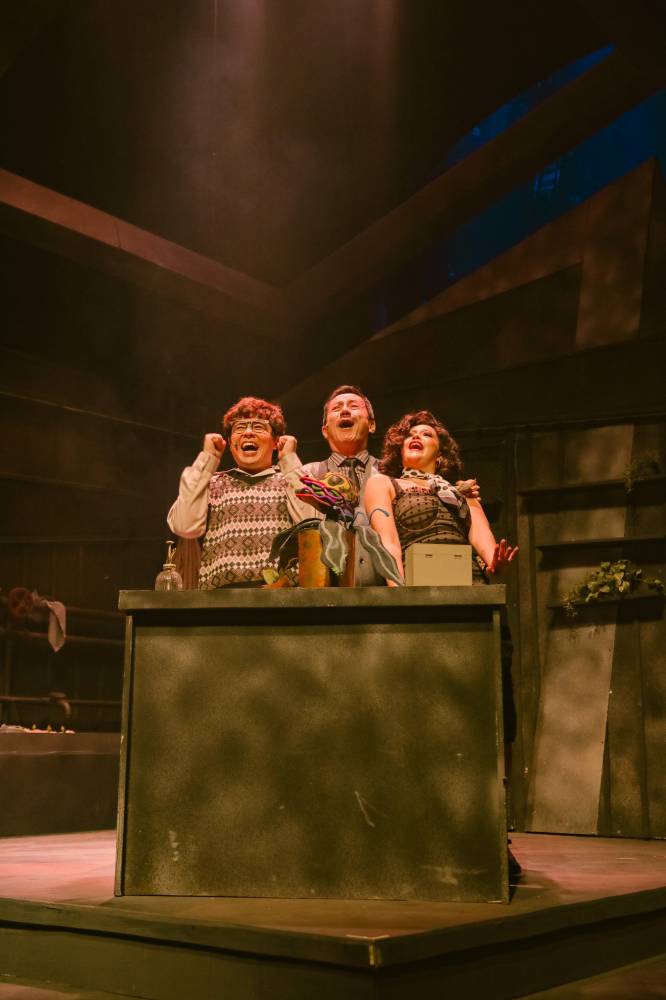
Much trickier, however, is the show’s satirical edge—its mix of camp and tragedy, all grounded in grim socioeconomic realities—whose weight this “Little Shop” doesn’t fully capture. There’s still fun to be had here, but it leaves less of a shock than one might hope for.
“Little Shop” has always been particularly weird, but Howard Ashman’s book (adapted from the 1960 Roger Corman film written by Charles B. Griffith) remains involving because of how it emphasizes the squalor in which its characters live, which is never romanticized as something they’re bravely overcoming.
Protagonists Seymour (Nyoy Volante, alternating with Reb Atadero) and Audrey (Karylle Tatlonghari and Sue Ramirez) are brutally self-deprecating: Seymour pays for his fortune by having Audrey II literally drain him of blood, while Audrey’s relationship with her abusive, sadistic boyfriend Orin (Markki Stroem and David Ezra) is something she feels she “deserves,” given her past lifestyle.
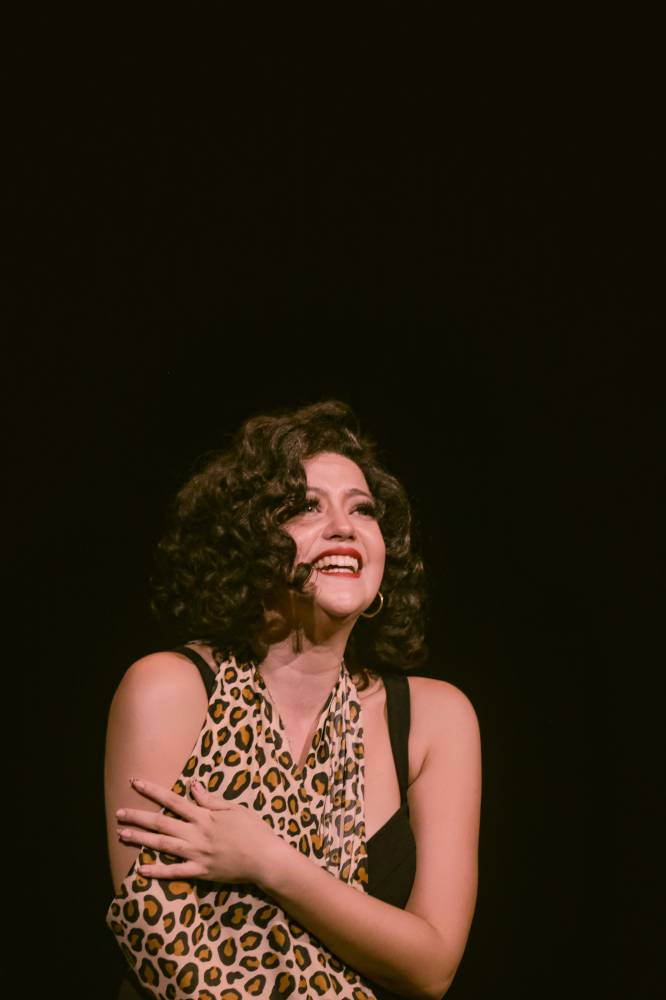
Beneath the monsters
Like many great horror stories, “Little Shop” points toward something deeper beneath the monsters and gore. Despite Seymour’s best intentions, his struggle to pull himself out of poverty is overtaken by temptations of fame and material wealth, which only threaten to harm the people around him and corrupt the world at large.
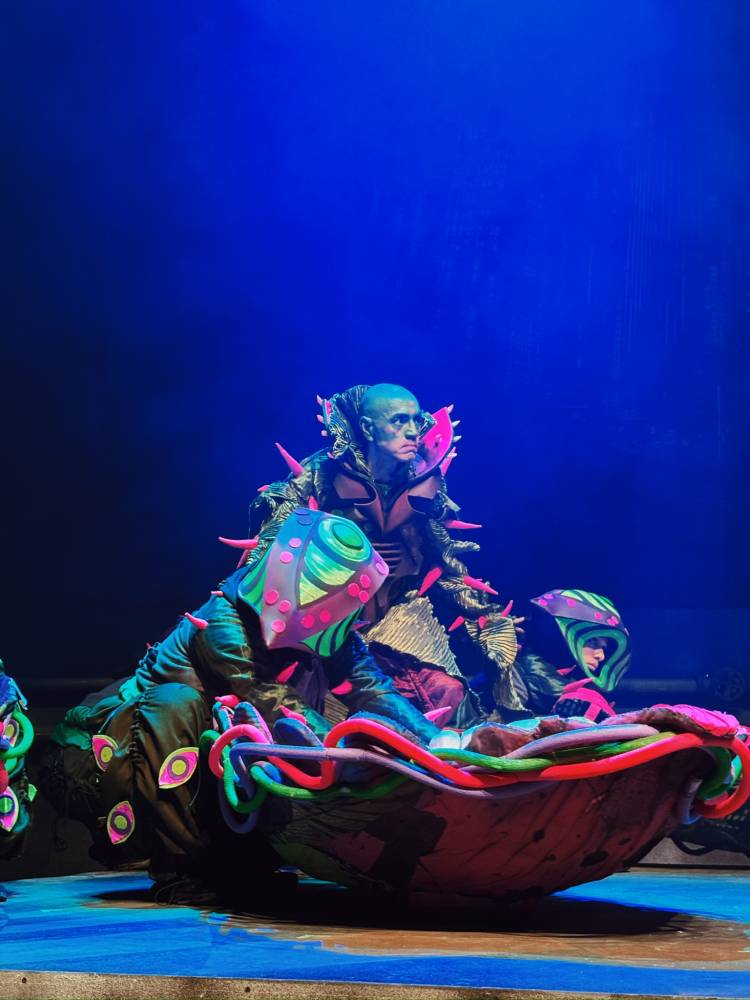
Mio Infante’s set and costumes (with Joseph Matheu’s lighting) imply how unstoppable this corruption is by having the stage gradually transform from worn-out urban street to metallic spaceship interior. Grotesque green growths also begin to sprout through the actors’ clothing—an infection that, eerily, none of them seem to notice.
Still, even with these subtler touches, the main draw of “Little Shop” for many is the central monster, Audrey II—typically brought to life through puppetry or as a separate performer. The way that this production executes its Audrey II definitely doesn’t congeal into one magic trick, especially for those seated on the far left, who get too clear a peek behind the curtain.
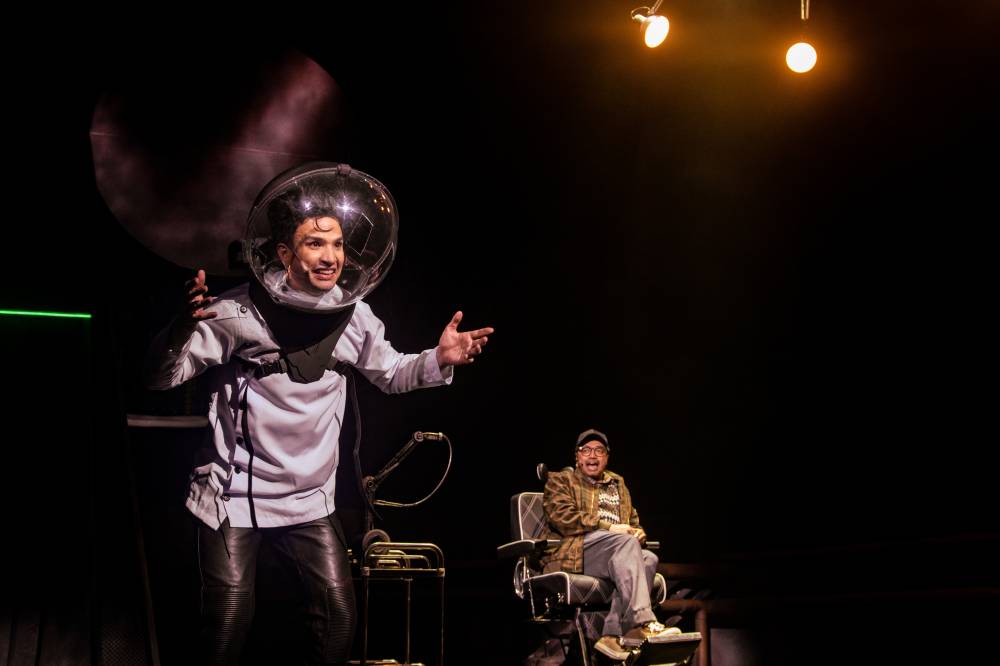
But combined efforts from Infante, director Toff de Venecia, choreographer Stephen Viñas, puppet designer Kayla Teodoro, an entire dance team, and OJ Mariano and Julia Serad (alternating as Audrey II’s voice) expand the character into a whole set piece that can feel all-consuming, or representative of Seymour’s inner darkness.
Unfortunately, outside of key scenes starring Audrey II, this show doesn’t convey the full weight or intensity of its characters’ suffering to balance out the absurdity of their situation. There’s a tidiness to how it’s all presented, which works for certain intimate musical numbers but not for the general scramble of life on Skid Row.
Climactic scenes and inevitable deaths don’t land with much impact, and feel oddly tongue-in-cheek for moments that should be much more tragic. There’s a hesitation to commit to the horror, right up to its challenging ending.
Neurotics
However, when it comes to the comedic aspects of “Little Shop,” the cast captures the precise frequency that’s needed. Atadero can play neurotics like Seymour in his sleep, with all of his nervous movements feeling considered and deliberate. In her assured theater debut, Ramirez easily keeps pace with both Audrey’s difficult vocal parts and her more sensitive inner character.
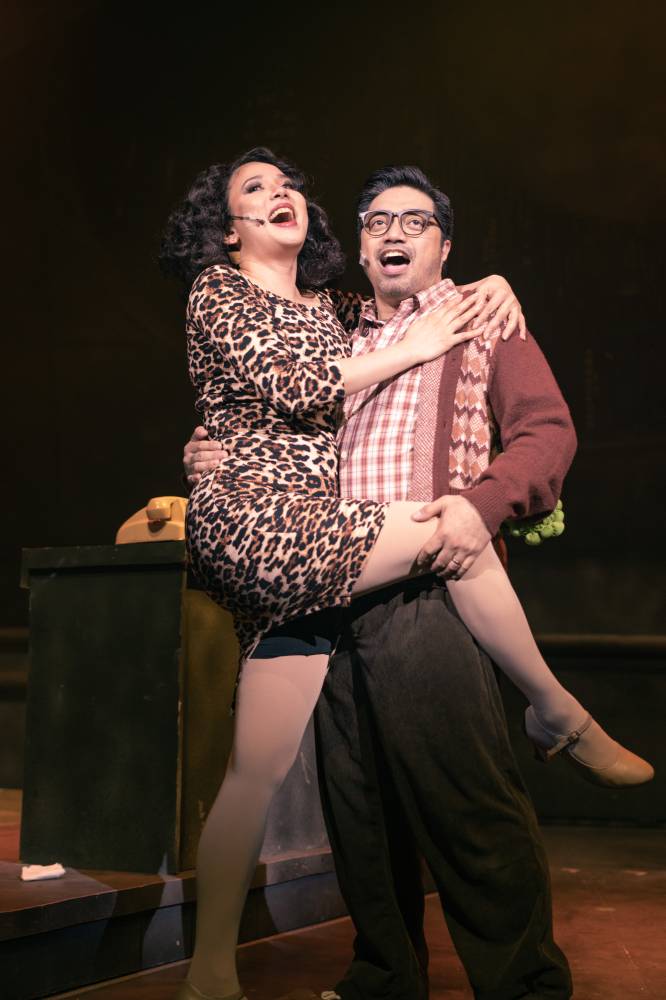
Both Audie Gemora’s hapless Mr. Mushnik and David Ezra’s ghoulish Orin slip into this exaggerated world effortlessly. And the trio of street urchins played by Abi Sulit, Paula Paguio and Mikee Baskiñas form the ensemble’s crucial backbone, harmonizing beautifully whatever the mood.
If Sandbox’s musical proudly succeeds anywhere, it’s in bringing out the eccentricities of Alan Menken and Howard Ashman’s retro score. The music embraces styles of rock and roll and doo-wop from the ’60s, but not just to evoke the time period.
“Little Shop’s” story is very much about characters trapped in an older world, with an impending, alien future that promises advancement—but only in exchange for more violence. It’s incredibly dark despite its playful exterior.
But even if a production can’t perfectly nail that contradiction, the material is strong enough to guarantee that any interpretation should stay ripe and healthy.
“Little Shop of Horrors” concluded its run on July 28 at the Globe Auditorium, Maybank Performing Arts Theater, BGC, Taguig City.

















